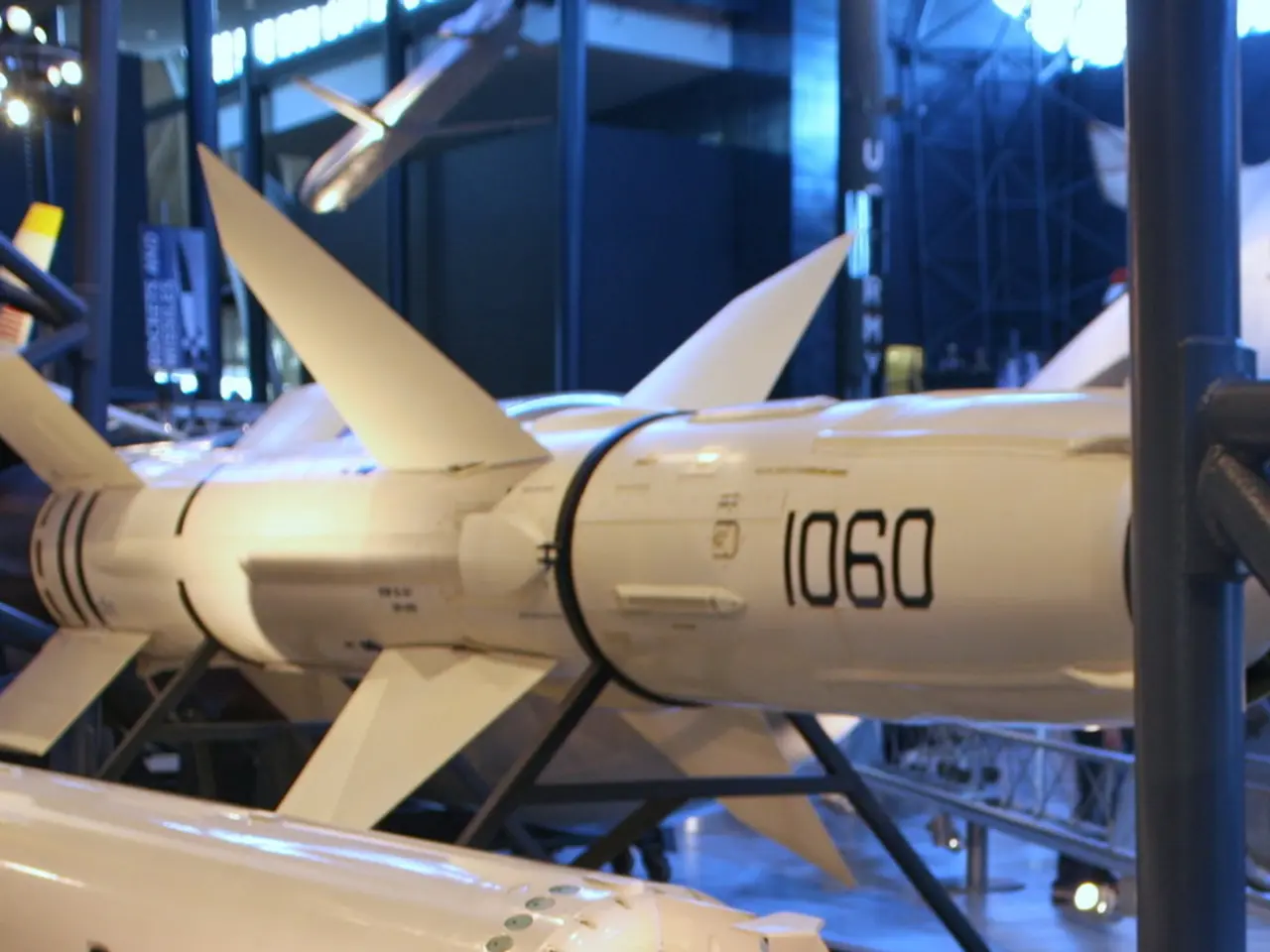Russia's President Putin issues warning to Ukraine and Europe by announcing plans to station hypersonic missiles in Belarus.
In a significant geopolitical development, Russia's new hypersonic missile, the Oreshnik, is reportedly set for deployment in Belarus later this year. This move could potentially alter the strategic threat landscape in Eastern Europe.
The Oreshnik, an intermediate-range ballistic missile (IRBM), was first operationally used in combat on November 21, 2024. It flies at speeds between Mach 10 and 11 (12,300–13,500 km/h), making it nearly impossible to intercept with current missile defense systems. The missile can carry multiple independently targetable reentry vehicles (MIRVs), delivering up to 36 submunitions with surgical precision.
Russia began serial production of the Oreshnik missile system by mid-2025, with the first units already delivered to its armed forces. The missile's combat use against a Ukrainian military facility in Dnepr in late 2024 and President Vladimir Putin's confirmation of mass production and deployment have emphasised its strategic significance.
Belarus, a long-time ally of Russia, may receive the Oreshnik missile systems by the end of 2025. This would represent a significant expansion of Russian hypersonic capabilities in Eastern Europe and potentially alter the regional military balance. The potential impact on Ukraine and neighboring countries is substantial, as the Oreshnik's hypersonic speed and maneuverability render it virtually unstoppable by current defenses.
The treaty signed by Putin and Belarusian President Lukashenka gives "security guarantees" to Belarus, including the possible use of Russian nuclear weapons. This move follows the Kremlin's revision of its nuclear doctrine, which places Belarus under Russia's nuclear umbrella amid tensions with the West over Russia's ongoing war in Ukraine.
However, it's important to note that the Oreshnik's actual capabilities are yet to be fully proven, with some experts suggesting they may be overblown for propaganda purposes. The deployment of tactical nuclear weapons to Belarus could further escalate tensions, as it would allow Russian aircraft and missiles to reach potential targets in Ukraine more easily and quickly if Moscow decides to use them.
The revamped nuclear doctrine signed by Putin lowers the threshold for Russia's use of its nuclear weapons. The doctrine states that Moscow could use nuclear weapons "in response to the use of nuclear and other types of weapons of mass destruction" against Russia or its allies, as well as "in the event of aggression" against Russia and Belarus with conventional weapons that threaten "their sovereignty and/or territorial integrity".
This development underscores the ongoing tension between Russia and the West, particularly in the context of the ongoing conflict between Russia and Ukraine. As the situation continues to evolve, it is crucial for all parties involved to prioritise diplomacy and de-escalation to avoid further escalation of the conflict.
[1] The Guardian [2] BBC News [3] CNN
Politics and general news outlets, such as The Guardian, BBC News, and CNN, have reported the potential impact of Russia's deployment of the Oreshnik hypersonic missile to Belarus, highlighting its ramifications on Eastern Europe's strategy and military balance, particularly in the context of the ongoing conflict between Russia and Ukraine. War-and-conflicts are a concern as the treaty signed by Putin and Lukashenka provides "security guarantees" to Belarus, including the possible use of Russian nuclear weapons, potentially escalating tensions in the region.








